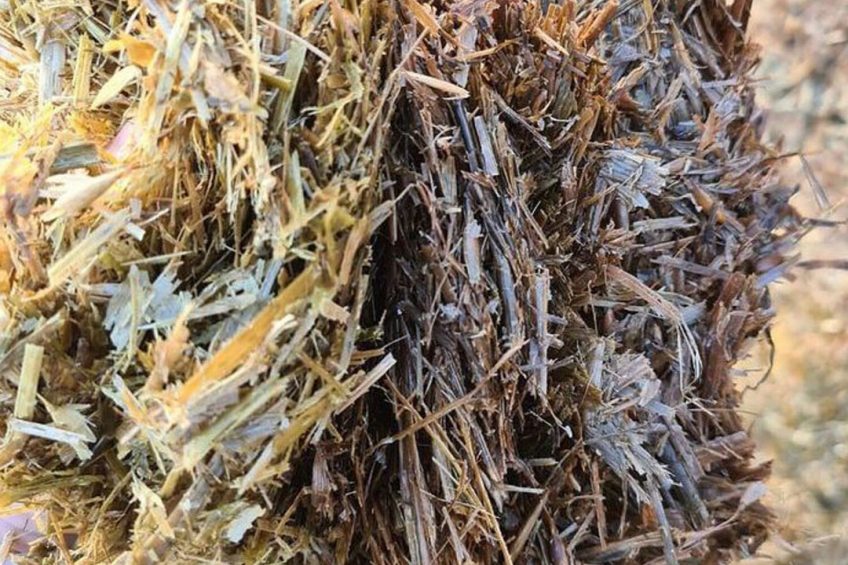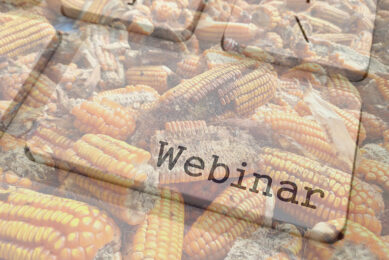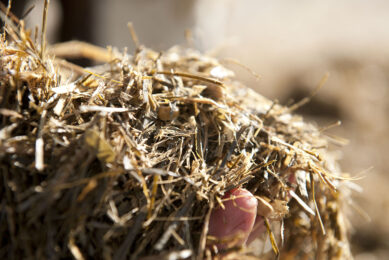Understanding and avoiding mycotoxin contamination

The proper storage of feeds is one of the most important elements to minimise the potential for mycotoxin contamination. Even when it is not dangerous to health, poor quality of feed can negatively impact a dairy herd’s performance.
When it comes to feed quality, the small details have the potential to make the most impact – for better or for worse. While the nutritional profile and type of ingredients used are keenly important to the healthy dairy herd, the quality and cleanliness of the feed can turn even the best of rations into one that is inadequate or even life-threatening. One of the first issues related to quality is the presence of mycotoxins or certain types of fungi (such as mould) that produce harmful toxins.
It can be incredibly easy to breeze past the routine upkeep and inspections regarding feeding and storage especially in areas such as grain bins, silos, commodity sheds, mixer wagons and more. However, contamination in even one of these areas can be a breeding ground for moulds and fungi that can impact an entire batch of feed. And even when it is not dangerous to health, poor quality of feed can have a negative impact on a herd’s performance.
Exploring mycotoxins
Multiple types of fungi produce mycotoxins which can be present in a wide variety of forages and feed ingredients. This includes pasture, silage, cereal grains and forages, corn, hay, straw, commercial feeds and more. Moisture along with improper storage and handling are the most common culprits for fungi growth.
“Usually environmental stressors, such as droughts and insect damage, (also) predispose plants to mould proliferation and mycotoxin production,” says Luiz Ferraretto, a ruminant nutritionist and assistant professor at the University of Wisconsin-Madison. According to the Beef Cattle Research Council, risk levels are elevated when moisture and environmental temperatures are higher at the flowering stage of crops. The same applies to storage conditions with moisture levels outside the prescribed ranges for specific feeds and ingredients.
Fungi and mould are not exactly toxic to cattle in and of themselves. Rather, it is the mycotoxins the organisms produce as a defensive mechanism that causes the harm.
Effects of mycotoxins on dairy cattle
There are numerous effects that the presence of mycotoxins can have on an individual or group of animals. These include more evident side effects like decreased feed intake, gut issues, nutritional inefficiencies and unexplained weight loss or gain. They have also been known to cause issues with other bodily functions including the reproductive, immunity and respiratory systems.
Dairy cows exposed to mycotoxins at sufficient levels may have difficulty getting pregnant or have calves with health issues or, at high enough levels, have abortions.
In an article for the University of Kentucky Dairy Extension Resources, experts Michelle Arnold and Cynthia Gaskill warn that a specific type of mycotoxin, aflatoxins, are especially dangerous for dairy animals. This category is a potent liver toxin, an immunosuppressant, mutagen and carcinogen. In certain regions, the government and health departments regulate how many concentrations of these toxins can be found in fluid milk.
Lactating animals exposed to aflatoxins can also decrease their milk production. Robert Van Saun, an extension veterinarian at Penn State explains that loss of milk is usually a secondary effect – not because of the toxin itself – due to decreased feed intake. However certain contaminants can pass into the milk and subsequently impact calves who consume it. Other symptoms can include an increase in ketosis, acetonemia, diarrhoea and displaced abomasums.
Strategies to eliminate mycotoxins
The proper storage of feeds is one of the most important elements to minimalise the potential for mycotoxin contamination.
“The most common issue during storage of dry feeds is the combination of heat and moisture as moulds can proliferate when moisture is 15% or more and temperature greater than 50 °F,” explains Ferraretto. “For silage, which is wet and probably warm enough for mould proliferation, the main issue is the presence of oxygen.”
He adds that any poor feed management practice that leads to excessive oxygen becoming trapped in the silo after sealing also increases susceptibility to mould and mycotoxin production.
“After silage opening,” Ferraretto continues, “feeding enough feed to cope with air penetration in the silo is also key to avoid yeast and mould proliferation and silage deterioration.”
Besides avoiding excessive moisture at time of harvest, cleaning and maintaining storage units and feed bunks on a routine basis are also recommended. Feed and ingredients should also be checked for any signs of heating, mould and general decay before and during feeding.
“Removing visually-spoiled silage is a key management practice to avoid issues with mycotoxins,” says Ferraretto. “But sometimes mycotoxins can be found in “clean” looking silage. It is advised to analyse silage made from stressed plants (i.e. droughts, high disease or insect damage incidence) for mycotoxins.”
The latest detection methods
“Mycotoxin diagnosis is very challenging,” says Van Saun. “It is difficult to measure in body tissues, with the exception of aflatoxins in milk.”
However, he notes that some pathologic lesions can occur in specific tissues (such as the brain, liver and kidney) that may indicate a mycotoxin problem.
“Finding elevated mycotoxin concentrations in the feed is highly suggestive of the underlying cause,” he says, “but this is often difficult due to the sporadic nature of mycotoxins in feed.”
In their article, Arnold and Gadkill note that identifying the specific type of mould can allow testing for potential contaminants, but it cannot identify the specific type of mycotoxin. The two major types of mycotoxin tests on the market are quick and qualitative tests. These can be purchased from commercial and public laboratories that specialise in veterinary and feed testing. Usually, these are used by veterinarians and feed processors, but they can be purchased for on-farm use if deemed necessary.
Even with the best of precautions, the threat of mycotoxin contamination still exists. However, farms that are proactive about maintaining feed integrity and freshness can be assured it is extremely unlikely to ever become a widespread issue.
References are available on request.







